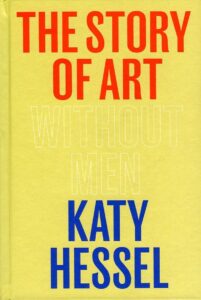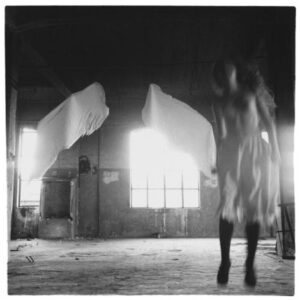In 2015 Katy Hessel ‘walked into an art fair and realised that, out of the thousands of artworks before me, not a single one was by a woman’. If that was a 21st century revelation, it also reflected generations of neglect of women as serious artists. The Story of Art Without Men (2022) is Hessel’s response. Starting in 1500 and extending to young artists working today, it brings together long-forgotten figures and new voices working in every art movement and sometimes no movement at all. It embraces a multiplicity of artistic developments and media, including painting, sculpture, textiles, installations, performance art, photography and mixed media. Hessel writes from a feminist perspective; and her overall tone reflects an optimism for the future that outweighs anger about past and continuing injustices.
Her new story features 31 photographers and artists working with photography: Anna Atkins (1799-1871), Julia Margaret Cameron (1815-79), Claude Cahun (1894-1954), Marcel Moore (1892-1972), Dorothea Lange (1895-1965),Tina Modotti (1896-1942), Gertrud Arndt (1903-2000), Dora Maar (1907-97), Lee Miller (1907-77), Diane Arbus (1923-71), Claudia Andujar (b 1931), Lorraine O’Grady (b. 1934), Mierle Laderman Ukeles (b 1939), Hannah Wilke (1940-93), Martha Rosler (b 1943), Paz Errazuriz (b 1944), Ishiuchi Miyako (b 1947), Adrian Piper (b 1948), Ming Smith (b 1950), Nan Goldin (b 1953), Carrie Mae Weems (b 1953), Cindy Sherman (b 1954), Shirin Neshat (b 1957), Francesca Woodman (1958-81), Lorna Simpson (b. 1960), Maud Sulter (1960-2008), Catherine Opie (b 1961), Sarah Lucas (b 1962), Gillian Wearing (b 1963), Zanele Muholi (b 1972) and Khadija Saye (1992-2017). These are artists who use the medium to record humanity, tell stories and explore the self, to address identity and challenge stereotypes, to promote the underrepresented and marginalised and dismantle hierarchies. Significant other genres in the medium, such as landscape, photojournalism, travel, architecture and fashion, are largely absent. What this tells us about photography as a gendered practice, I’m not sure.
That aside, I think Hessel’s book says five key things about photography. First, it has been central to the development of art since the mid-19th Century. Second, it helped to expand the range of subjects that are considered appropriate for art to explore. Third, it paved the way for a more inclusive approach to art in the part of galleries and the art establishment. Fourth, it has been central to the democratisation of art. Fifth, much of its power lies in its flexibility: the work of the artists listed above has often involving the blurring of boundaries between different practices.



